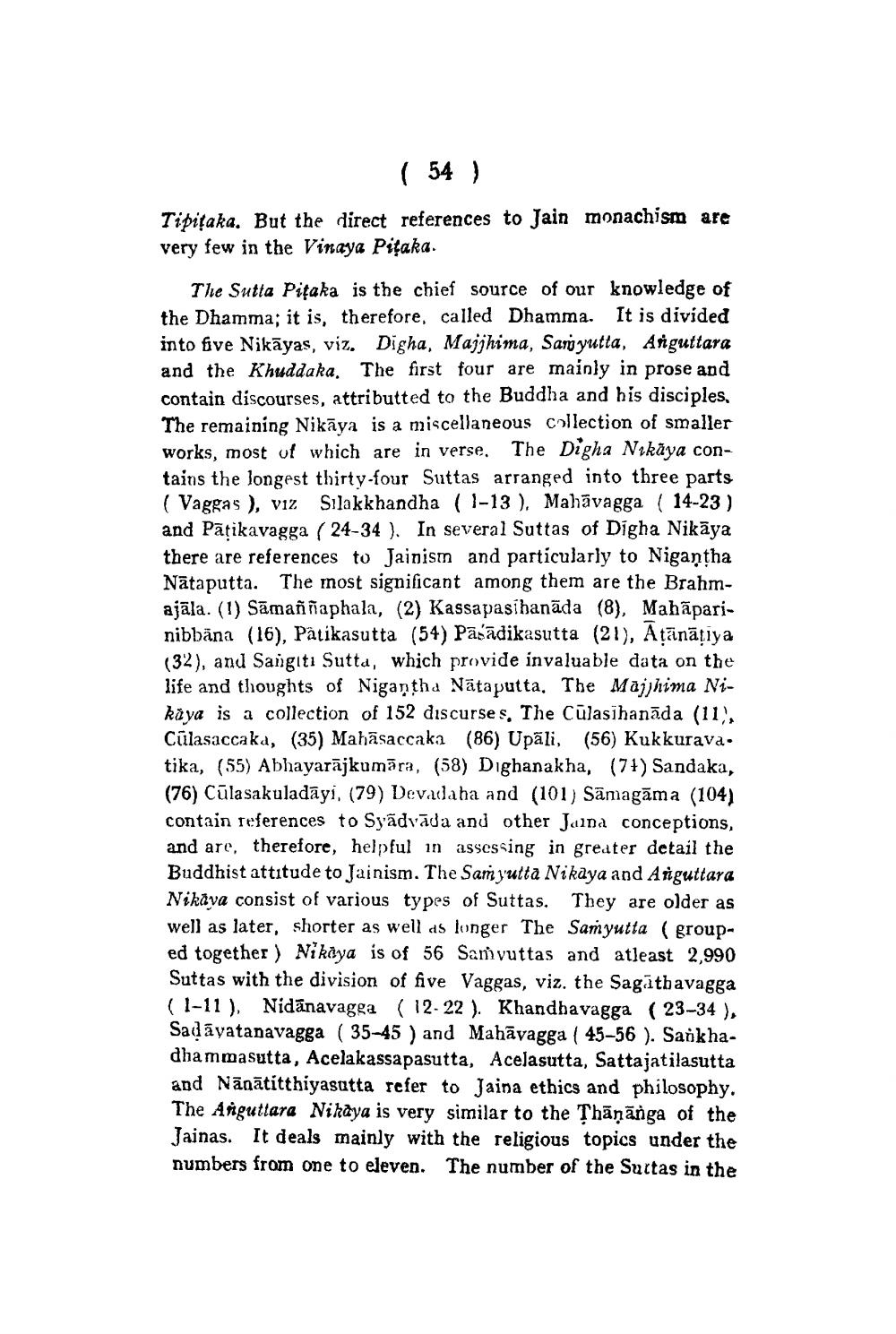________________
( 54 )
Tipitaka. But the direct references to Jain monachism are very few in the Vinaya Pitaka.
The Sutta Pitaka is the chief source of our knowledge of the Dhamma; it is, therefore, called Dhamma. It is divided into five Nikāyas, viz. Digha, Majjhima, Samyutta, Anguttara and the Khuddaka. The first four are mainly in prose and contain discourses, attributted to the Buddha and his disciples, The remaining Nikāya is a miscellaneous collection of smaller works, most of which are in verse. The Digha Nikāya contains the longest thirty-four Suttas arranged into three parts ( Vaggas ), viz Silakkhandha (1-13). Mahāvagga ( 14-23) and Pāţikavagga ( 24-34 ). In several Suttas of Digha Nikāya there are references to Jainism and particularly to Nigantha Nātaputta. The most significant among them are the Brahmajāla. (1) Sāmaññaphala, (2) Kassapasihanāda (8), Mahāparinibbăna (16), Patikasutta (54) Pasadikasutta (21), Atanatiya (32), and Sangiti Sutts, which provide invaluable data on the life and thoughts of Nigantha Näta putta. The Majjhima Nikaya is a collection of 152 discurses, The Culasihanāda (11), Cūlasaccaka, (35) Mahāsaccaka (86) Upāli, (56) Kukkurava. tika, (55) Abhayarājkumāra, (58) Dighanakha, (71) Sandaka. (76) Cūlasakuladāyi. (79) Devadaha and (101) Sāmagāma (104) contain references to Syâdvāda and other Jaina conceptions, and are, therefore, helpful in assessing in greater detail the Buddhist attitude to Jainism. The Sam yutta Nikaya and Arguttara Nikava consist of various types of Suttas. They are older as well as later, shorter as well as longer The Samyutta (grouped together ) Nikaya is of 56 San vuttas and atleast 2,990 Suttas with the division of five Vaggas, viz. the Sagātbavagga (1-11), Nidānavagga ( 12-22 ). Khandhavagga (23-34 ), Sadāyatanavagga ( 35-45 ) and Mahāvagga ( 45-56 ). Savkhadhammasutta, Acelakassapasutta, Acelasutta, Sattajatilasutta and Nānātitthiyasutta refer to Jaina ethics and philosophy. The Anguttara Nikaya is very similar to the Thāņānga of the Jainas. It deals mainly with the religious topics under the numbers from one to eleven. The number of the Suctas in the




